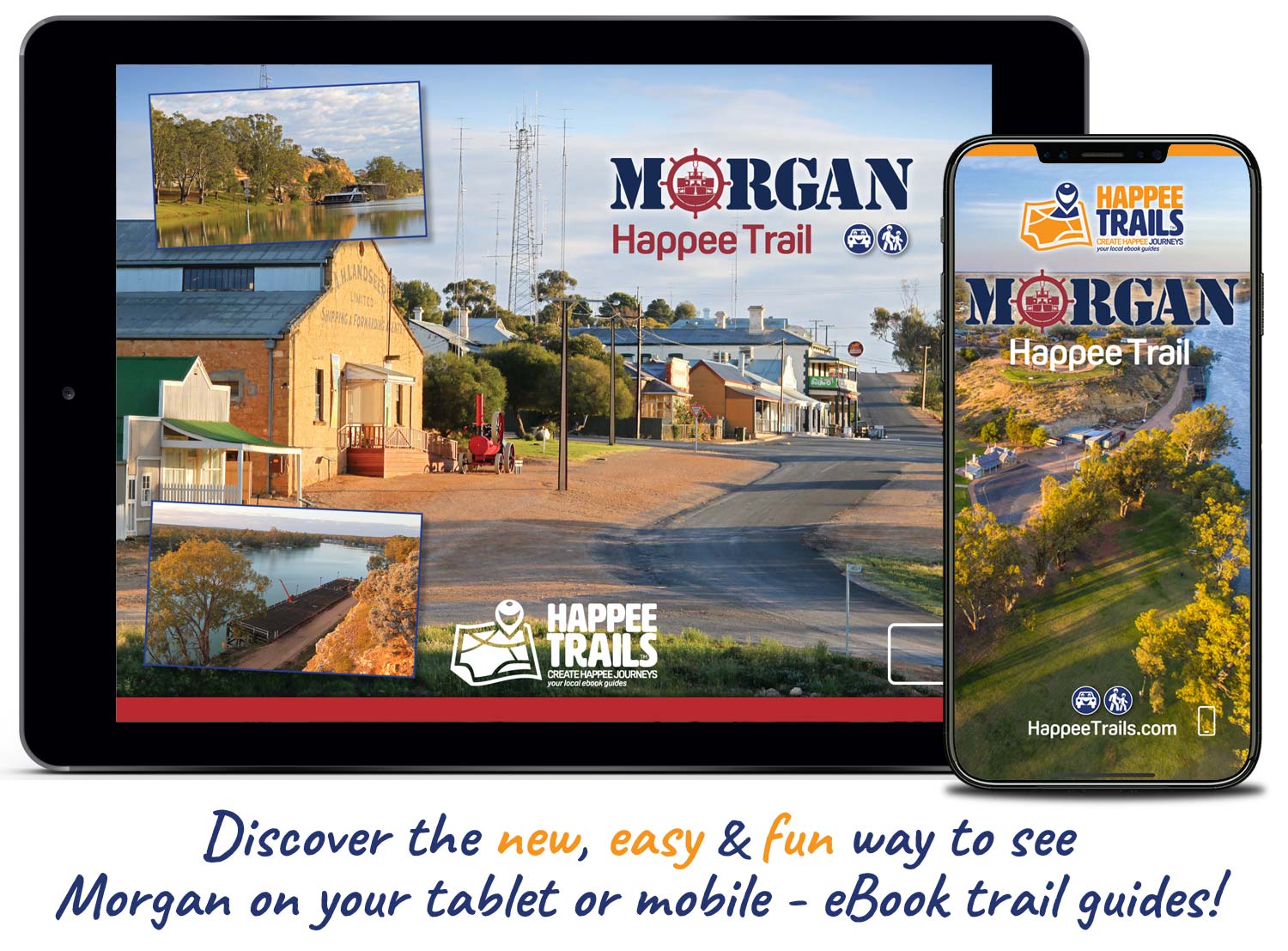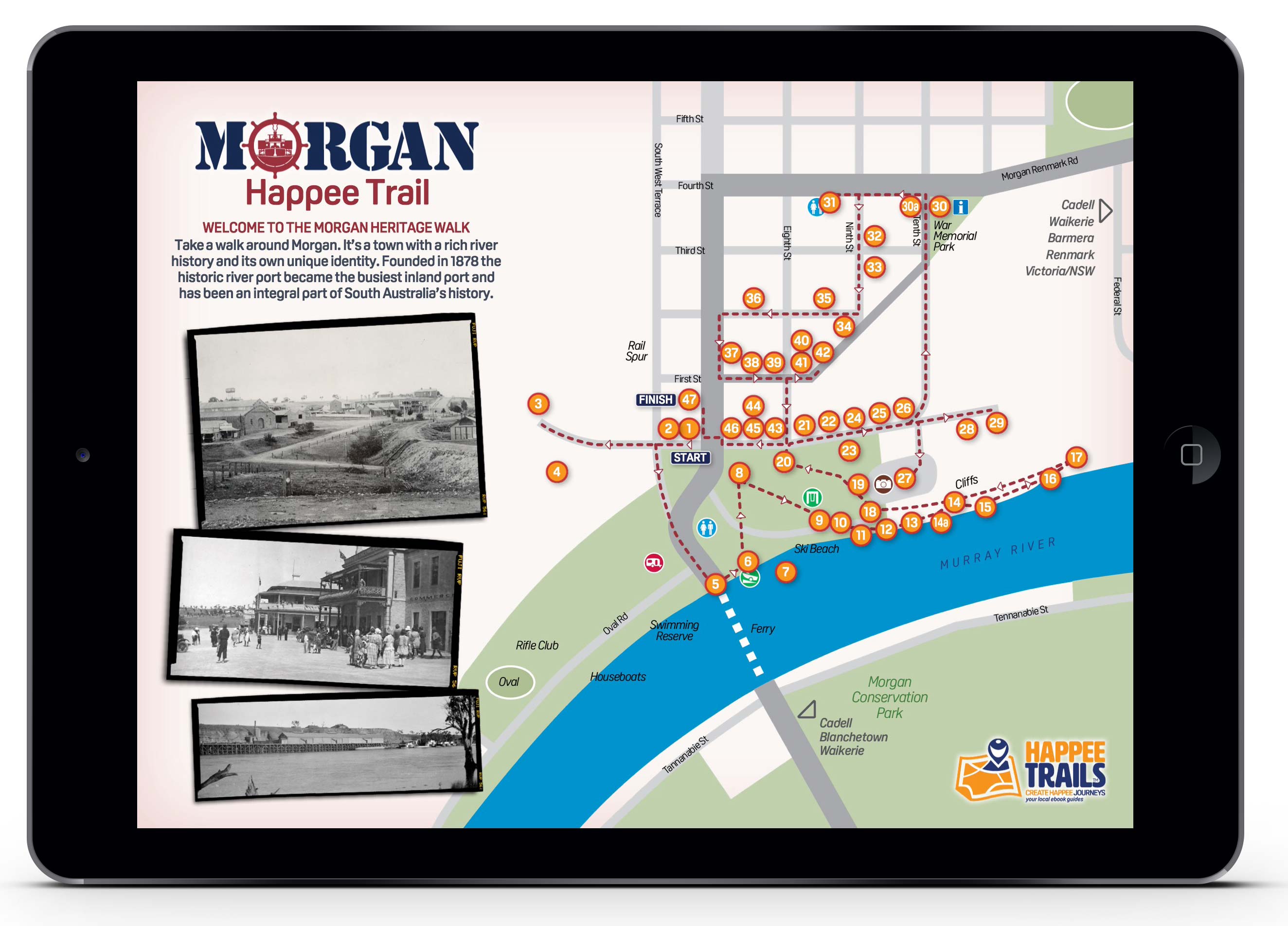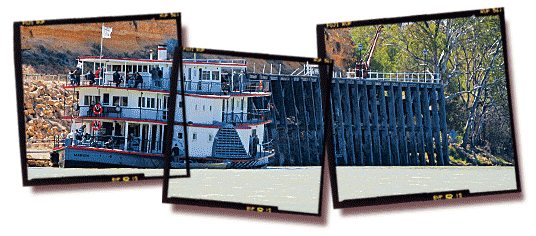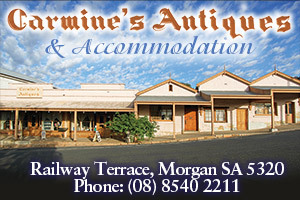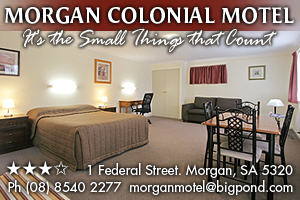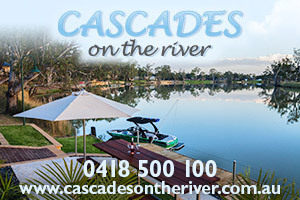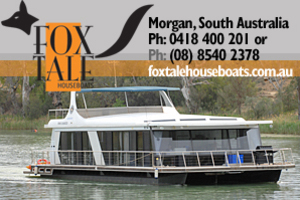
Morgan’s Historic Town Walk
Take a walk around Morgan. It’s a town with a rich river history and its own unique identity. Founded in 1878 the historic river port became the busiest inland port and has been an integral part of South Australia’s history.
2 Marion Lodge
3 Former Soldiers Memorial Hospital
4 Railway Billets
5 Ferry Terminus
6 The Morgue
7 The Murray River
8 Turntable
9 Water Hydrant
10 Station Platform
11 Ticket Office
12 Railway Refreshment Room
13 Oil Shed & Railway Platform Cranes
14 Railway Track
14a PS Canally
15 The Wharf
16 Sunken Barge & Steamer
18 Goods Shed
19 Station Masters Residence & Visitor Information Centre
20 Morton Bay Fig Tree
21 Commercial Hotel
22 Post Office Row
23 Captain Charles Sturt Monument
24 Current Post Office
25 Postmaster’s Residence
26 Old Police Station
27 Lookout
28 Former Customs Residence
29 Railway Cottages
30 Trees of Tribute
31 Council Chambers
33 Morgan Institute
34 Former Dunk Residence
35 Kings Row
36 Former Butcher Shop & Bakery
37 Former Bank of Adelaide
38 Typical Square Plan Residence’s
39 Former Eudunda Farmers Building
40 Original Home of James Symons
41 Former Shop of James Symons
42 Former Shop of James Symons
43 Terminus Hotel
44 Former shop of James Symons
45 Old Tea Rooms
46 Former Bank of Adelaide Premises
47 Morgan RSL
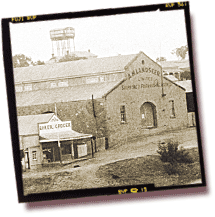 1. Landseers’ Warehouse
1. Landseers’ Warehouse
Landseers’ Warehouse was completed in 1878 in time for the official opening of the Railway. AH Landseer Ltd was not only the largest merchant in Morgan, but the largest trading and shipping company on the Murray. A private section of the railway was built for the extra convenience of shunting loaded trucks between station and warehouse. Morgan Museum is the current caretaker of the building. It houses the Living History compilation reflecting the rural farming community and townspeople and a rare collection of horse drawn vehicles of historical significance. National Touring Exhibitions on display.
2. Marion Lodge
The lodge was originally built as shop premises and is believed to be the first bake house of five to be established at Morgan. It is known that Mrs. Duggin conducted a bakery and grocer there in 1892.
3. Former Soliders Memorial Hospital
Was officially opened in 1921 by Lady Weigall, and the first medical staff were Dr. Gillan and Matron Dorsch. Four years later the maternity wing was opened. Shortly afterwards, Violet Runholm a 16-year-old employee was burnt to death while performing her duties. The hospital closed in 1942 and the nurses’ quarters were demolished in the 1970’s.
4. Railway Billets
This building was once used as accommodation for Railway employees who serviced the Kapunda-Morgan Railway line. From this vantage point you can still see the old rail spur running up the gully where they used to turn the larger train engines around which would not fit on the earlier constructed Turntable. Also the old bridge supports are still standing that carried the train through to the Port.
5. Ferry Terminus
The Ferry Terminus is believed to date back to the 1850’s when passengers would winch themselves across the river. The first official ferry, built in Morgan in 1906 (hand operated) charged 1d per passenger, 2d per cattle, 1/4d per sheep, 1d per pig, 2d per bicycle and 6d per vehicle. The ferry operator’s wages were 15/- per week. It is interesting to note that in 1950 the ferry operator, Mr. Weaver was requested by Council to pay for his ‘Sanitary Pan’. He declined on the grounds that campers and visitors also used the same facility, which made it a public convenience for which he was not obliged to pay.
6. The Morgue
Was erected in 1886 – victims of accidents along the river were taken there by steamer prior to burial. The cemetery is situated on the outskirts of the township (off the Burra Road), which was established in 1889. The burial records can be viewed in Landseer Living History museum. It is believed that the first person to be buried there was a Royal Navy Surveyor by the name of Harvey, who had speculated whilst assisting in the preparation of the ground, as to who would be the first to be interred. Tragic and ironic – he died by drowning the next day.
7. The Murray River
Just after the Darling River system is the longest river in Australia and the life blood of South Australia, also part of The Murray Darling Basin. There is a Flood indicator pole next to the boat ramp with the flood levels marked clearly.
8. Turntable
Was constructed in 1878 to facilitate the turn around of railway engines in the rail yard.
9. Water Hydrant
Once supplied water to locomotive boilers.
10. Station Platform
11. Tick Office
The steam train engine “Pioneer” made its first run into Morgan on April 17th, 1878, and the last train “Duchess of Gloucester” pulled out 91 years later in November 1969. Six trains a day were once in operation and the Morgan line became the busiest in the State. Now not even a railway line is to be seen. This platform has now become Morgan’s Water front Museum. Exhibits concentrate on the paddle steamer/railway trade of the illustrious past assisted further by underwater discoveries from the area.
12. Railway Refreshment Room
Built in the 1940’s to cater for passengers transferring from train to bus. Wally Pendle ran the mail and passenger service. Starting with T-Model Fords and extending to buses continued until 1949 when the business was taken over by Stateliner Pty Ltd. It is estimated that 400,000 passengers were safely transported. The Sunraysia Café in Post Office Row provided refreshments.
13. Oil Shed & Railway Platform Cranes
14. Railway Track
Serviced the wharf area and the stockyards at the end of the line.
14a PS Canally
PS Canally is a side wheel paddle steamer that was originally launched in 1907. It was built in Koondrook, Victoria by RW Beer. It has a wooden hull on wooden frames with a flat bottom and double ended hull shape and is just over 28 metres long. It was fitted with a steam engine from a locomotive in 1912.
In the 1950’s she was used as a barge behind the PS Hero which was destroyed by fire in January 1957. The Canally was left tied to the landing at Boundary Bend and through neglect and inattention, eventually sank at her moorings. In 1998 the Rivers and Riverboat Historical & Preservation Society raised the Canally. Assistance for significant financial support was gained from the Euston Club Resort including timber for the decks that were sourced from a brewery in Queensland, boiler and more. In mid 2010 ownership was transferred to the Mid Murray Council and she was carefully towed to Berri for stabilization of the hull. It is being restored to its former glory by a dedicated team of volunteers. Source
15. The Wharf
Was and still remains one of the most impressive examples of its kind on the entire Murray River system. As a Port Morgan became a huge success, and during the height of the steamer trade between 1880 and 1915, the massive red gum and blue-gum wharf was extended. The large structure was progressively lengthened and built in three stages. The first section in 1877, the second section in 1878 and the final only remaining section we see today in 1912, combining an overall length of 168 metres, or 550 feet. The wharf was more that just a timber loading platform; it was in the prime of its working life, a complex of five water hydraulic cranes with associated piping, gearing and drive shafts linked to the steam boiler house and engine house. The rear section of the platform carried a railway line and an extensive part of the platform was covered with a large goods shed. A network of stairways, ladders and decking descended through the massive timber piers and girders to provide service to landing stages at lower levels. Gangs of up to fifty men worked continuous 24 hour shifts, while six trains a day were dispatched to Port Adelaide, and long queues of paddle steamers and barges laden with wool, wheat, and other goods to be unloaded, were a common sight.
16. Sunken Barge & Steamer
Just upstream of the wharf the rusting ribs of the barge “CROWIE” lie close in by the riverbank. Built at Goolwa in 1911, and is reputed to be the largest built for the River Trade. The vessel sank at it moorings in 1946. It remains a reminder of the days when barges towed by steamers carried thousands of tons of wool, wheat, timber and agricultural goods up and down the river. The wreck of the Sternwheeler “COROWA” lies 200 yards up from the wharf, built in 1868 at Moama. Part of her stern wheel rudder poles lies above the water and a small section of a steam pipe and boiler lies proud of the water to a height of about 10 centimetres. She sank at her moorings in 1946 after being abandoned.
17. Powder Magazine
Dug into the cliff was built in 1881 for the safe storage of explosives. Now return along the same path past the wharf to the station masters residence.
18. Goods Shed
In front of which is the steam boiler, recovered from the river.
19. Station Masters Residence
Built in 1887 at a cost of £890 and housed the first Station Master Tom Tapp, who commenced his duties on October 28, 1878. The building comprises a Ladies Waiting Room and Booking Office adjoining the residence of two bedrooms, kitchen and dining room.
20. Moreton Bay Fig Tree
Planted Morgan Council 1907. 
21. Commercial Hotel
Built in 1878 was primarily the working man’s hotel. In the early days of wharf building some 60 workers were accommodated there and meals had to be served in three sittings.
22. Post Office Row
Morgan’s first row of five shops supplying services over the years, the centre shop was built in 1880, the lower two added by, the two by 1900. The top shop in the row was at one time the office of the Gem Navigation Co Ltd and Murray Shipping Ltd. Now open as an Antique shop and museum with a unique collection of tapestries and vintage hand tools.
23. Captain Charles Sturt Monument
Commemorates his voyage of exploration along the Murray River and back in 1830, and who later led an exploration team to Central Australia in 1844.
24. Current Post Office
Built In 1912 the front section of the new Post Office was erected, at a cost of only 40 pounds. Further additions to the building were made in 1913, and the final improvements bringing the building up to its present stage were completed in 1942.
25. Postmaster’s Residence
Built in 1879 at a cost of £675 this building served as Post Office, Postmaster’s residence and Telegraph Station. Postal services were conducted in rooms at the front, and entrance to the residence was at a side door.
26. Old Police Station
Built in 1879 and Sergeant Schmidt took up duties there. The cells from the previous Police Station were brought up from the river flat and re-erected at their new location in 1891.
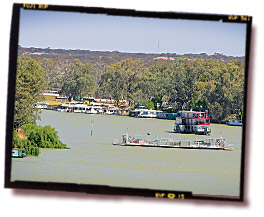 27. Lookout
27. Lookout
This is the site of the underground water tank used to fill steam engines which was built at the beginning of the rail era in Morgan and which has had the roof removed and been backfilled and now a nice garden has replaced the water. Also you will find a sign ‘ River Boat Trail’. This sign is to promote the remaining historic boats and sites associated with shipping on the Murray River.
28. Former Customs Residence
Built in 1879 faced the River and further sections have been added firstly by the Railways when they took over the cottage and in more recent times.
29. Railway Cottages
Four were erected on Billy Goat Hill (about 1879) to house railway employees. When the number of goats increased alarmingly the Council stipulated that each employee was only allowed to keep a maximum of five goats.
30. Trees of Tribute
Planted in 1940 by the students of the Morgan Primary School in memory of the soldiers who died in World War I. The children called this area the “Silent Wood” and passed through it with fingers-to-lips believing that harm would befall them if they broke the silence. In 2005 the Mid Murray Council and Morgan RSL redeveloped this area to its present attractive rest area.
31. Council Chambers
First Council Chambers built on the present site, The District Council of Morgan came into official existence in 1888. Currently Mid Murray Council local area office. Morgan Internet and Resource centre at rear available to you for printing and photocopying and internet access.
32. James Bennett Gibbs Cairn
In the 1860’s James Gibbs pioneered the Stage Coach route from Kapunda to Morgan; the stables were at this site.
33. Morgan Institute
The first stage of The Morgan Institute began early 1909. The grand official opening ball was held on Easter Monday 1910. The second phase of the building was in 1924 when the front portions were added to create a Returned Soldiers Memorial. Now also housing the Morgan Library.
34. Former Dunk Residence
Built about 1885 for Albert Landseer Dunk, the Manager of AH Landseer Ltd and later the agent for Gem Navigation Co.
35. Kings Row
Comprises of a group of five houses – the central one being the former home of Captain Hugh King, referred to as “The Grand Old Man of the Murray”. Captain King, born at Glasgow in 1840, was an early pioneer of the Murray River paddleboats. He built his first boat “Moira” at the age of 25. This was followed by the building of “Cheviot”, “Princess Royal” and “Jupiter”. In 1889 he went into partnership and established the River Murray Navigation Co. Ltd and became involved in building a fleet of river boats, including “Jane Eliza”, “Gem”, “Pearl”, “Ellen” and “Ruby”. Eventually, as the sole owner, he sold out to the Gem Navigation Co. He died in 1921. It is believed that his employees occupied the other houses in the row. 
36. Former Butcher Shop & Bakery
Built in 1897, by Mrs Bruhn consisted of residence, shop, store house and old bake house. Trade carried on by the Bruhns in this joint venture entailed baking by night and butchering by day.
37. Former Bank of Adelaide
Operated in 1884 to 1896. It’s closure was brought about by a general lowering of living standards directly attributed to an amazing increase in the rabbit population. It was not unusual for a farmer to exterminate over 1,000 rabbits each night in an attempt to save his crops. Whilst rabbits ravaged the country, many people were forced to exist on flour and water.
38. Typical Square Plan Residence’s
Built from local dressed limestone in the 1890’s.
39. Former Eudunda Farmers Building
Built by H Van Alpen in 1892, then became the trading establishment of John Symonds, a well known river trader who was the first Chairman of the District Council of Morgan. It was purchased from J. Symons in 1923 for the sum of £2,100 by Eudunda Farmers. (Friendly Supermarket)
40. Original Home of James Symons
Is a two-storey house built about 1880. James Symons, who had conducted a wine shanty hotel on the river flat at North West Bend between 1869 and 1878, was one of the most affluent men in Morgan and a relative of John Symons – the first Chairman of the Morgan Council.
41. Former Shop of James Symons
Built in 1880 and used at various times as saddler, boot maker, sweet and cool drink shop. It was at one stage owned by the District Clerk and also used as temporary Council Office and Chambers at a rent of 5/- per week.
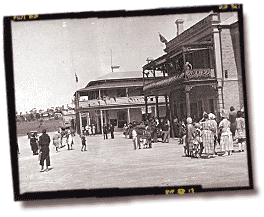 42. Former Shop of James Symons
42. Former Shop of James Symons
Built in 1880 and used at various times as a butcher shop, jewellers, and soft drink retailer. William Beaumont, who arrived at Morgan in 1870, used these premises as a butcher’s shop from 1881 to 1901. He was the great grandfather of Sir Donald Dunstan, once Premier of South Australia. A huge wooden block on which animals were slaughtered still remains on the premises.
43. Terminus Hotel
Built in 1878 was originally referred to as Lambert’s Assembly Rooms. It hosted many a travelling show and social function prior to the building of the Institute and was patronized mainly by what was locally termed “The Heads” (Business Owners). Of historical significance, it was the first meeting place of the District Council of Morgan in 1888.
44. Former Shop of James Symons
Built in 1878, was burnt down and rebuilt before 1900.
45. Old Tea Rooms
This pre-1890 building was first used as offices in 1900 converted into tearooms run by Mrs. Von Alpen.
46. Former Bank of Adelaide Premises
The Bank and these premises, built in 1909, shut in 1930 during the Great Depression. The premises were formerly used by the Waikerie branch of the ANZ Bank as an agency. The first ever Bank Manager in Morgan was GW Calder. Today it is available for holiday rental.
47. Morgan RSL
The Morgan RSL (Returned & Services League) is a small group of passionate members with an interesting Memorial Garden. Established 1954 the RSL boasts a 40mm Bofors anti aircraft gun built in 1934 from Sweden. The memorial garden includes a remembrance wall with plaques of the servicemen that have passed away or kill in action from Morgan. The hall is available for hire. For more information visit rslsa.org.au/stores/morgan-rsl




